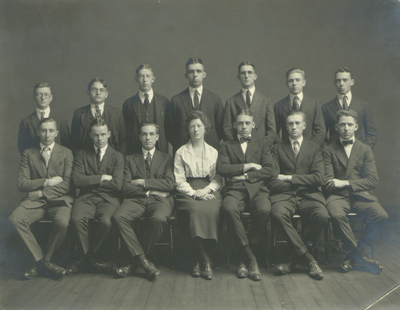University of Massachusetts Amherst Records

Established in western Massachusetts in 1863 as the Massachusetts Agricultural College, the University of Massachusetts Amherst is a national research university and the flagship campus of the state’s five-campus University system. UMass, one of the founding members of the Five College Consortium established in 1965, offers reciprocal student access among the University and Amherst, Hampshire, Mount Holyoke, and Smith Colleges. The University currently enrolls approximately 24,000 undergraduate and graduate students, and offers 87 bachelors degree programs, 6 associates, 73 masters, and 51 doctoral programs in 10 schools and colleges.
The Archives of the University of Massachusetts Amherst document the institutional memory of the campus and serve as the largest and most comprehensive source of information on the history and cultural heritage of the University. As the collective memory of the university, the repository contains official records and items having historical value such as records of governance, policy, operation of administrative offices, departments, research, programs, and publications. Unpublished materials in the Archives include photographs, films, memorabilia, administrative records of major university offices, and the papers of presidents, trustees, administrative officers, and members of the faculty.
Please note that collections for individual faculty members, administrators, and students, as well as selected groups and administrative units at the University are listed separately in UMarmot. The Concordance to the Archives is an alphabetical listing of University departments, centers, groups, and other units, providing call numbers, when appropriate. Researchers may also wish to consult the online guide to UMass Amherst collections. Our digital repository, Credo includes a growing number of oral histories and digitized collections of papers and organizational records. YouMass is a wiki devoted to the history of the University and its predecessors, the Massachusetts Agricultural College and Massachusetts State College.
 View:
View: 



